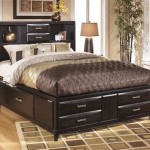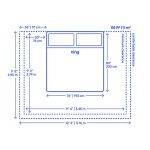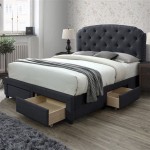Oversized Blanket For King Size Bed: A Comprehensive Guide
The selection of bedding often involves navigating a diverse range of options, with size being a primary consideration. For those with king-size beds, ensuring adequate coverage and comfort requires careful attention to blanket dimensions. An oversized blanket can prove to be a valuable investment, offering numerous benefits over standard-sized alternatives. This article will explore the advantages of oversized blankets for king-size beds, delving into the factors to consider when making a purchase and highlighting the materials commonly used. Furthermore, it will address the practical aspects of caring for an oversized blanket to ensure its longevity and maintain its quality.
The primary function of any blanket is to provide warmth and comfort during sleep. However, a blanket that is too small for the bed can lead to discomfort and disrupted sleep. King-size beds, being the largest standard bed size, present a unique challenge in this regard. Regular king-size blankets may not offer sufficient overhang on both sides of the bed, potentially leading to drafts and an unequal distribution of warmth. This is particularly noticeable when sharing the bed with a partner, as each individual may inadvertently pull the blanket, leaving the other exposed.
An oversized blanket addresses this issue by providing ample coverage. The increased dimensions allow for a generous overhang on both sides and at the foot of the bed, ensuring that both individuals remain comfortably covered throughout the night. This added coverage can contribute to a more consistent and restful sleep experience. Moreover, the aesthetic appeal of a well-draped blanket can enhance the overall look and feel of the bedroom, creating a more luxurious and inviting atmosphere.
Benefits of Choosing an Oversized Blanket
The decision to invest in an oversized blanket for a king-size bed often stems from a desire for enhanced comfort and functionality. These blankets offer distinct advantages compared to standard-sized options, addressing common issues related to coverage and warmth. Understanding these benefits can assist in making an informed decision.
One of the most significant benefits is improved coverage. An oversized blanket ensures that the entire surface of the bed is adequately covered, including the sides and foot. This prevents drafts, especially during colder months, and ensures a consistent temperature throughout the night. For couples, this eliminates the issue of one person pulling the blanket and leaving the other exposed, leading to a more harmonious sleep experience. The extra material also allows for tucking the blanket in along the sides, further securing it and preventing it from shifting during the night.
Another crucial benefit is enhanced comfort. The increased fabric provides a greater sense of security and coziness. The weight of the blanket can be particularly comforting, offering a gentle pressure that can help to reduce anxiety and promote relaxation. This can be especially beneficial for individuals who struggle with insomnia or other sleep disorders. Furthermore, the soft textures of many oversized blankets contribute to a more luxurious and comfortable sleep environment.
Beyond the practical advantages, an oversized blanket also contributes to the overall aesthetic of the bedroom. The generous drape of the blanket creates a more visually appealing and inviting space. It can add a touch of elegance to the room, especially when paired with coordinating bedding and accessories. The available variety of colors, patterns, and textures allows for customization to suit individual preferences and complement the existing décor.
Factors to Consider When Purchasing an Oversized Blanket
Selecting the right oversized blanket for a king-size bed involves more than simply choosing the largest available option. Several factors should be carefully considered to ensure that the chosen blanket meets individual needs and preferences. These factors include material, weight, weave, and care instructions.
The material of the blanket is perhaps the most critical factor to consider. Different materials offer varying levels of warmth, softness, and durability. Common options include cotton, wool, down alternatives, fleece, and microfiber. Cotton is a breathable and versatile option, suitable for year-round use. Wool provides excellent warmth and is naturally moisture-wicking, making it ideal for colder climates. Down alternatives, such as polyester fill, offer a similar level of warmth to down but are hypoallergenic and easier to care for. Fleece is a soft and lightweight option, while microfiber is known for its durability and resistance to wrinkles.
The weight of the blanket is another important consideration. A heavier blanket can provide a sense of security and comfort, while a lighter blanket may be preferable for warmer climates or for individuals who prefer a less restrictive feel. Weighted blankets, which are significantly heavier than traditional blankets, have become increasingly popular for their potential to reduce anxiety and promote relaxation. However, it is important to choose a weight that is appropriate for the individual's size and strength.
The weave of the blanket affects its texture, durability, and warmth. Different weaves create different patterns and textures, ranging from smooth and silky to textured and plush. Common weaves include knit, woven, and quilted. Knit blankets are typically softer and more flexible, while woven blankets are more durable and less likely to stretch out of shape. Quilted blankets provide added warmth and can be used as a decorative element.
Finally, the care instructions for the blanket should be carefully considered. Some materials require special cleaning methods, such as dry cleaning, while others can be machine washed and dried. It is important to choose a blanket that can be easily cared for, as regular cleaning is essential for maintaining its hygiene and appearance. Checking the care label before purchasing the blanket is crucial for avoiding any potential damage during cleaning.
Common Materials Used in Oversized Blankets
The market offers a diverse array of materials used in the construction of oversized blankets, each possessing unique characteristics that cater to different preferences and needs. Understanding the properties of these materials is essential for making an informed purchase decision. The most common materials include cotton, wool, down alternatives, fleece, and microfiber, each with its own advantages and disadvantages.
Cotton is a natural fiber known for its breathability, versatility, and affordability. Cotton blankets are typically lightweight and comfortable, making them suitable for year-round use. They are also relatively easy to care for and can be machine washed and dried. However, cotton blankets may shrink after washing and are not as warm as other materials, such as wool. Different types of cotton, such as Egyptian cotton and Pima cotton, offer enhanced softness and durability.
Wool is a natural fiber prized for its warmth, durability, and moisture-wicking properties. Wool blankets are excellent for cold climates and can help to regulate body temperature, keeping you warm in the winter and cool in the summer. Wool is also naturally resistant to dust mites and mold, making it a good choice for individuals with allergies. However, wool blankets can be expensive and may require special cleaning methods, such as dry cleaning. Some individuals may also find wool to be itchy or irritating to the skin.
Down alternatives, such as polyester fill, are synthetic materials designed to mimic the warmth and loft of down feathers. Down alternative blankets are hypoallergenic, easy to care for, and relatively affordable. They are a good option for individuals who are allergic to down or who prefer a more budget-friendly alternative. However, down alternative blankets may not be as breathable as natural fibers, such as cotton or wool.
Fleece is a synthetic fabric known for its softness, warmth, and lightweight properties. Fleece blankets are often made from polyester and are available in a variety of textures and colors. They are relatively inexpensive and easy to care for, making them a popular choice for casual use. However, fleece blankets can attract static electricity and may not be as durable as other materials.
Microfiber is a synthetic fabric made from tightly woven polyester fibers. Microfiber blankets are known for their softness, durability, and resistance to wrinkles. They are also relatively inexpensive and easy to care for. Microfiber blankets are often used in hotels and hospitals due to their affordability and ease of maintenance. However, microfiber blankets may not be as breathable as natural fibers and can trap heat.
Ultimately, the choice of material will depend on individual preferences and needs. Factors such as climate, budget, allergies, and personal comfort preferences should all be considered when selecting an oversized blanket for a king-size bed.

Super Big Fleece Blanket Oversized King 120 X120 Soft Cozy Extra Large

Fleece Blanket Lasyl Super Big Oversized King 300x300cm Mercadolivre

The 365 Blanket Muslin Try Our Breathable Oversized King Comforter Comfort

Ultra Soft Cozy Oversized Down Comforter King Or Queen Bed Blanket 10 Color

Sweet Home Collection 100 Cotton Grand Hotel Oversized Blanket King Dark Gray Bl Dgray Kg

Ultra Soft Fluffy King Size Blanket For Bed Fuzzy Shaggy Faux Fur Warm And Thick Sherpa Tie Dye Decorative Gift Oversized Blankets 108x90 Inches 640 Gsm

The Duvet Comforter

Fleece Blanket Lasyl Super Big Oversized King 300x300cm Mercadolivre

Oversized Blanket 120x120 Inches Giant Huge 10 X10 For Bed Sofa

Ultracozy Big Oversized Blanket 100x100 Inches King Sized Double Sided Flannel Weighted Fleece For Bed Couch Throw Family








